Disclosure: We may get commissions for purchases made through links in this post.
Are you thinking of other ways to add style to your patio? Why not use moss as a decorative element! We've researched everything you need to know about leaving moss to grow in between your pavers.
The decision of whether or not to leave moss between pavers is actually a matter of your preference. If you find moss aesthetically pleasing rather than a problem, then you could use it to add style to your patio. However, doing this requires maintenance because it has its own repercussions.
Choosing to use moss as decorative figures can come out as good or bad. There are certain guidelines you have to follow to ensure it wouldn't have to be a future problem. Luckily, we are here to help you!
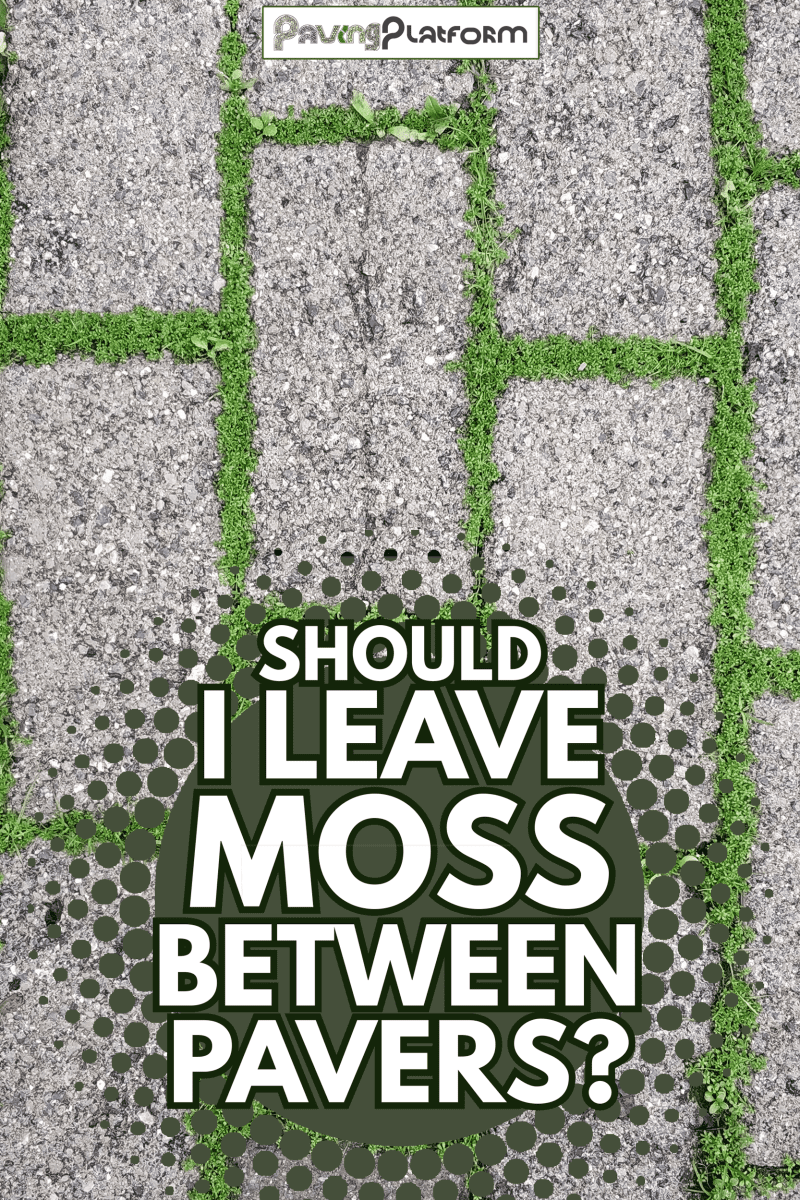
Is Moss Between Pavers Good or Bad?
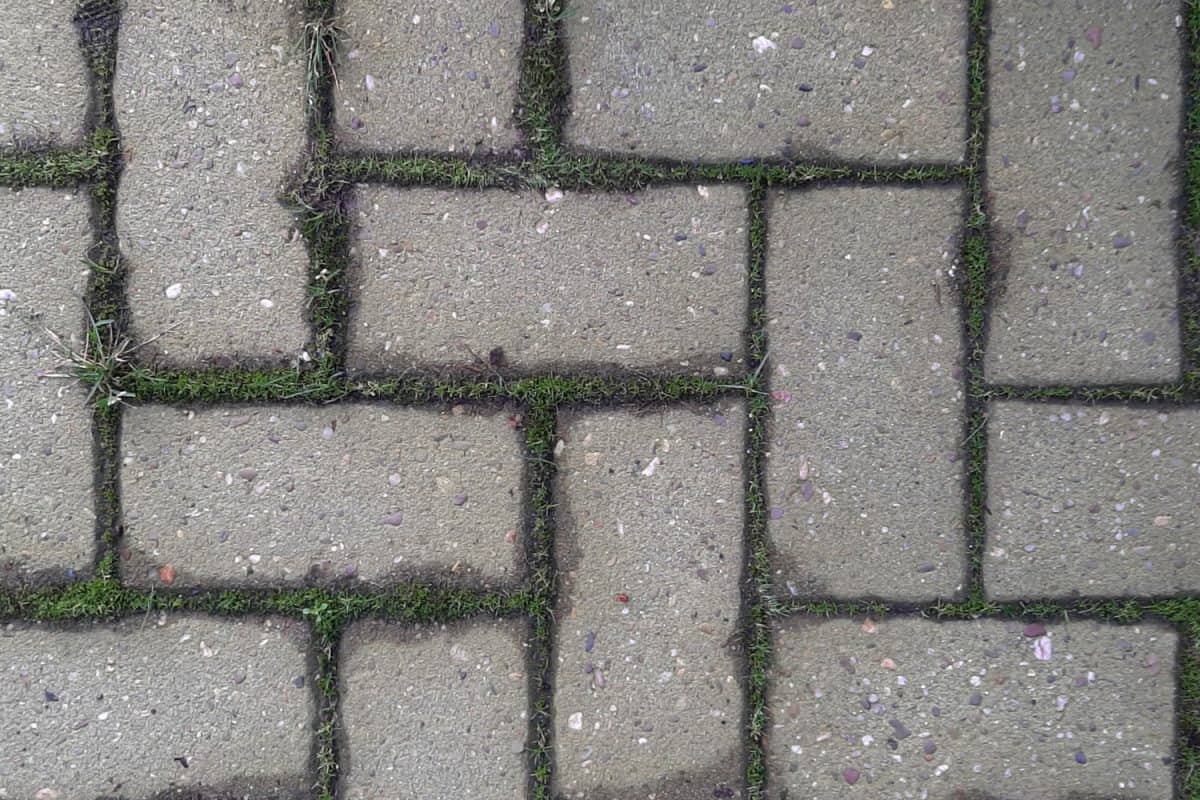
In this modern era, using moss as a decorative element is gaining popularity. The idea came from Japanese culture, although there's is more of a moss garden. Moss as an ornament has slowly crept West.
Moss in-between pavers can either be good or bad. Who can resist the pleasures of moss? Using it on patio pavers will definitely give off a country-like, serene atmosphere. It all depends on how you would manage it. It is important to understand that choosing to leave moss behind pavers for aesthetic purposes needs maintenance.
There are instances where some homeowners have left moss to grow that it bulged and became a tripping hazard. However, there are tips to avoid this kind of problem.
Tips On How To Maintain Moss On Pavers
Moss can be quite a nuisance to some people because it just grows in any area of their home. Nevertheless, in this modern age, people are embracing this new idea because it adds beauty and style.
Because of this reason, some problems may arise if you choose to grow moss in between your pavers. Luckily, here are some tips to steer clear of this problem.
Growth Control
As soon as you let moss grow, it really won't stop. Make sure you maintain the area by consistently cleaning it. Scrape off moss if it starts to creep on top of your patio pavers because it can get really slippery once you allow moss to grow on the larger surface.
One thing you will have to avoid if possible is to use a water hose. Moss generally thrives on wet and moist areas. If you wish to water your moss, use a spray bottle to have more control over its growth.
Spacing
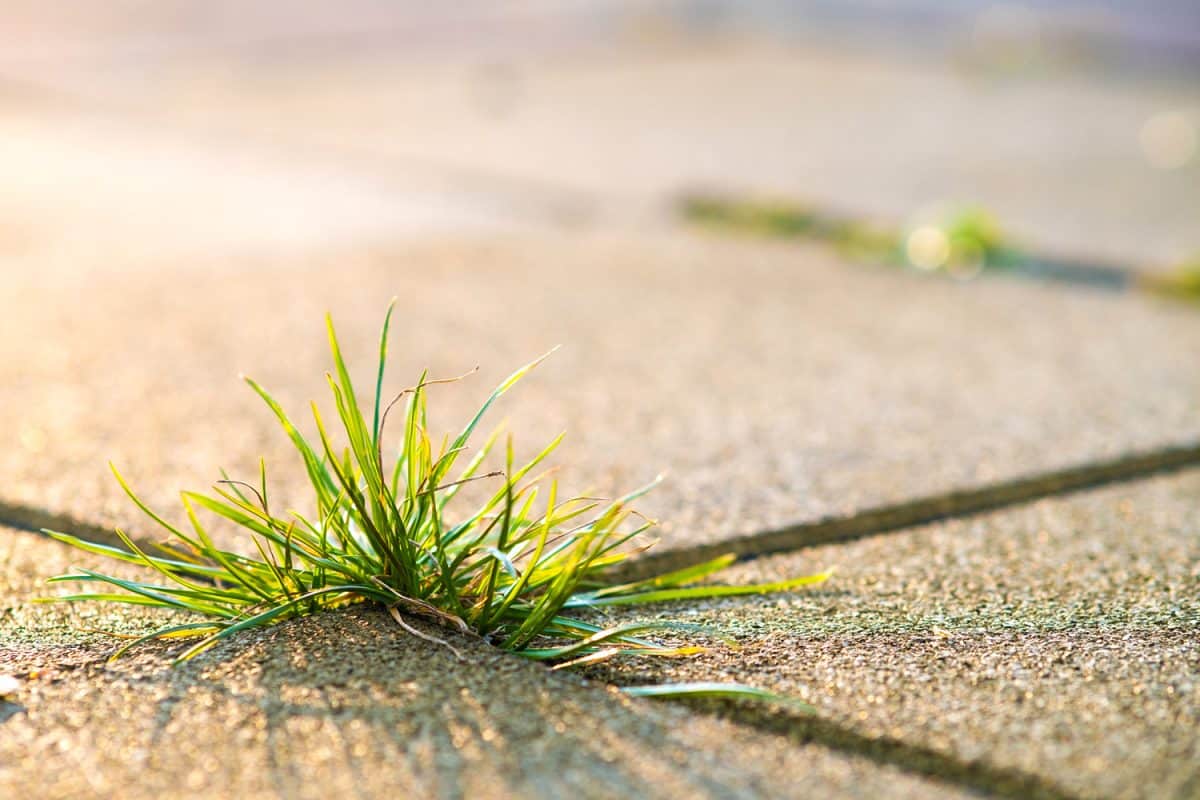
To keep moss from damaging your pavers, paving stones should be generously spaced rather than the usual narrower joints. Tight areas will make it difficult for both the pavers and the moss. Make gaps that are at least two inches wide.
Choose the right plant
There are varieties of moss and several plants that are perfect to put in between pavers. Choosing the right plant will make it easier for you to tend to your patio or garden.
Irish moss is a low-maintenance ground cover that is best used on dish gardens, rock gardens, and in-between pavers. But don't get fooled by its name! Irish moss is not a moss at all; however, this plant performs in a manner that is similar to moss.
Unlike moss, Irish moss requires low maintenance because it has different growing requirements than moss. It thrives best with full or partial sunlight, and it doesn't do well in wet conditions.
Get Irish moss seeds on Amazon.
If you still wish to use true moss species, you can definitely do so! There are several varieties of moss you can choose from.
How To Grow Moss Between Patio Pavers
If you are still interested in planning to use moss as a decorative element to your patio, just go with it! Here are some ways on how to do it.
1. Find Your Moss
The first thing you have to do is to find your moss. Look for landscaping shops or plant stores in your area.
If there isn't any available moss in the commercial establishments, you can scout your neighborhood for moss. This plant typically grows in shady and damp environments. You can most likely spot moss growing on trees or even beneath rotting wood in your lawn or backyard.
Once you have found moss fragments in your area, gently remove them to transplant by troweling or shoveling them out.
2. Clean the Spaces Between Your Pavers
Before you plant moss between your pavers, it is necessary to remove any weeds, grass, or plant growth in that area. The best way to do this is by uprooting the weeds with the use of your hands. Try to remove the roots from these plants as well to prevent them from growing back.
3. Dig out Pit and Prepare the Soil for Planting
Once you remove the weeds, use a trowel to dig up a trench. This is where you will transplant your moss. When you finished digging out a hole, apply an inch of garden soil into the trench.
Make sure that you have already installed an irrigation system for your moss. This will allow them to thrive in that area. You can do this by running an in-line drip between the pavers, lining the path with micro sprayers, or adjusting nearby sprinklers.
4. Plant Your Moss
Once you have bought or found suitable moss for your pavers, you have to plant them instantly. However, if you won't be able to do that immediately, you can maintain the health of your moss by keeping them in a shaded area, and by consistently misting or spraying them with water.
Wet the soil in between your pavers before planting the moss. Gently but firmly press down the plant into the soil. Afterwards, stamp down the moss with your hands or feet to release the air pockets. Do not worry! The moss won't be hurt if you stamp it down. It is a necessary thing to do for successful transplanting.
5. Water Your Moss
The final thing to do is to water your moss and pavers after planting. You will have to do this for 20 to 30 days straight to ensure the proper root establishment of your moss. Keep in mind, you must avoid overwatering your moss and pavers because it will wash the plant away.
To keep your moss from drying, and to ensure that they maintain their green color, you must continue watering it daily. You can use spray bottles so that you can still control the growth of your moss.
What Other Plants Can You Grow Between Pavers?
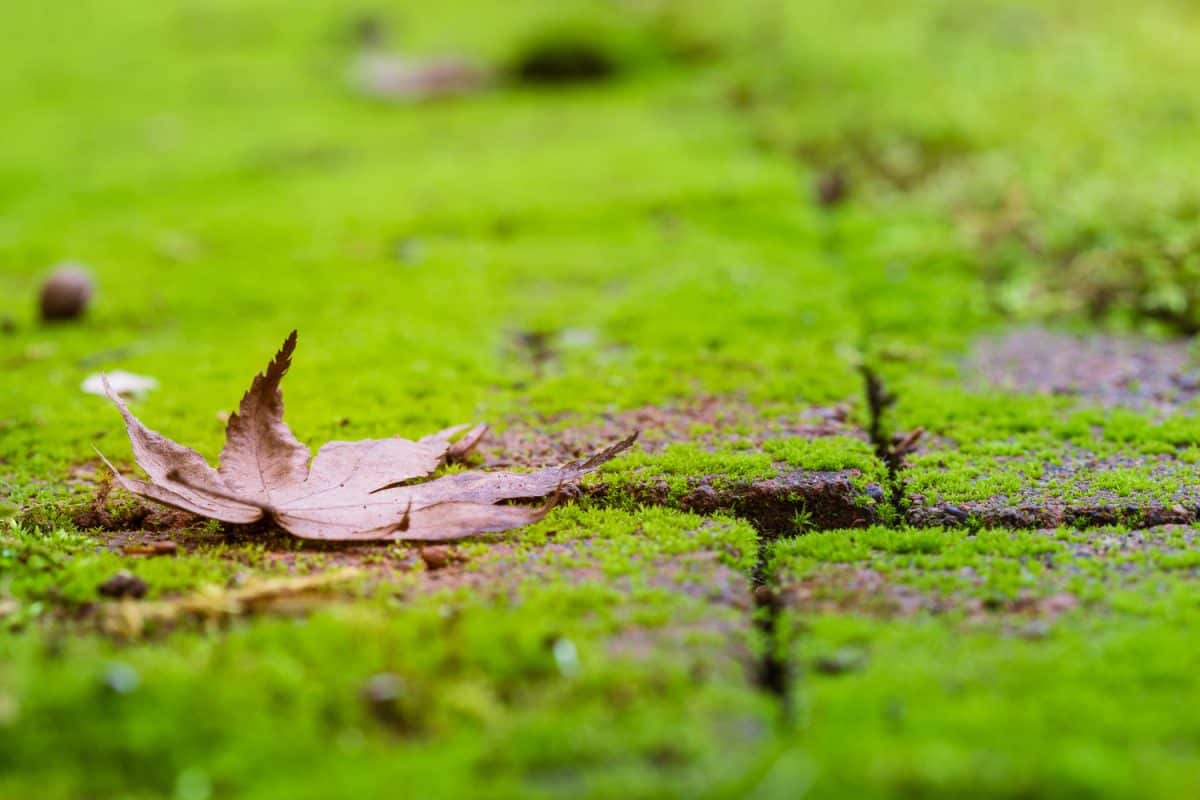
You can definitely use plants other than moss to put in between your pavers. Many plant enthusiasts have different favorites when it comes to growing plants in paved areas.
Creeping Thyme
Creeping Thyme is considered one of the best plants to put in between pavers and flagstones. This little herb has several varieties which have tiny and rounded fragrant leaves. Creeping Thyme comes in different shades of dark green, lime green, and yellow.
This plant is amazingly easy to grow especially because they thrive on difficult soils. You won't also have to worry about it being too bulbous that you can trip on it because they stay flat.
Get Creeping Thyme seeds on Amazon.
Dymondia
Dymondia, with its slender green leaves on top and gray underneath, is also a better choice. The way the leaves curl upward gives a two-toned look, not to mention this plant bears small daisy flowers. Dymondia softens the edges of stone pavers.
Chamomile
Chamomile is a fluffy plant with a meadow-like appearance. This plant thrives in partially shaded environments and well-drained soil. The downside of choosing this plant is that you have to trim it after flowering.
Jewel Mint of Corsica
Corsican mint is one of the smallest plants that resembles thyme and moss. It is a matting plant that spreads quite well that is why it is also an ideal choice. If you walk on them, they release minty puffs that waft with the air.
In Closing
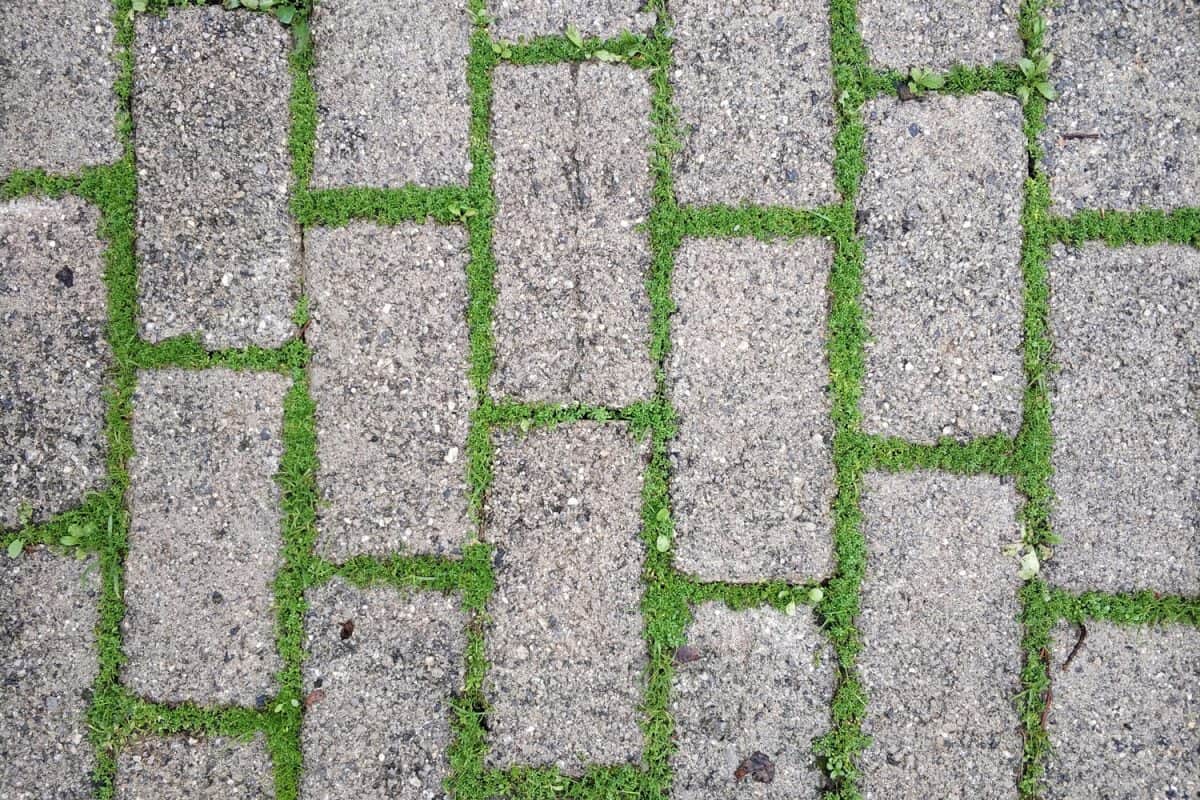
You can choose whatever plant is ideal to put in between your pavers. Moss or any other plant creates a serene and country atmosphere. Just don't forget the tips we've mentioned above!
If you find this article helpful, check out "Can You Put Stepping Stones on Artificial Grass?"
Also, check "Can You Now Over Stepping Stones?"



![Vibrant Red Paver Stone Path, Can You Spray Paver Sealer? [How To Apply It]](https://pavingplatform.com/wp-content/uploads/2022/04/Vibrant-Red-Paver-Stone-Path-600x400.jpg)
![Properly laid out red pavers for a garden, Can You Tint Paver Sealer? [And How To]](https://pavingplatform.com/wp-content/uploads/2022/04/Properly-laid-out-red-pavers-for-a-garden-600x400.jpg)
